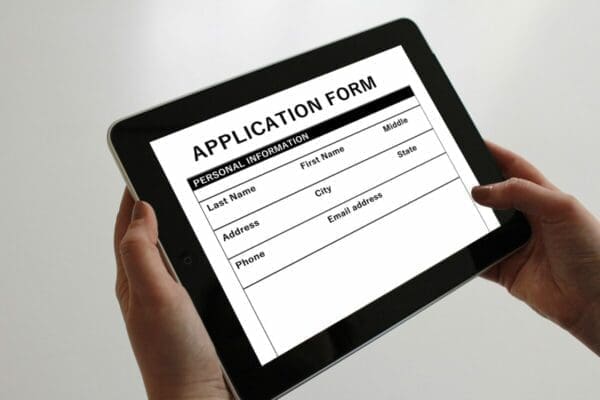Are You Drowning in a Sea of Job Applications?
Reviewing job applications and hiring new staff can take a long time. Research from LinkedIn found that only 30% of hiring managers said that the time-to-hire is less than a month.
And slightly more than a sixth said that it can take three to four months.
With levels of job loss increasing, time-to-hire is likely to increase as hiring managers need to read more and more applications.
4,228 people applied for one role in London this August. And this issue presents the question of how you can efficiently review that many applicants without missing any good hires?
In this article, award-winning HR service provider, Croner, explains the steps to make sure your hiring process is set up to deal with a high level of applicants.
Reconnect With Past Applicants
If you hire new staff often, you will have many candidates that have applied for a job before.
Before posting an ad, speak to previous applicants to find out if they’re still open to new roles and let them know of the opening.

Make sure that your data is GDPR-compliant before you store anyone’s personal information, but that is a small hurdle to clear in defining an efficient hiring process.
Of course, this approach won’t always work, and you need a steady stream of applicants to ensure you hire the best people.
Write an in-Depth Job Advert
The job description that you create is the first defence between you and the wrong applicants. Without going into detail, you are likely to receive a high level of interest from unsuitable candidates.
Your job advertisement should:
- Describe the role and where it sits within the company.
- List the key duties of this employee.
- Detail any requirements, such as qualifications or years’ experience.
- Provide salary information.
The advert is also a good chance to talk about the company. Providing details of the culture will ensure that people joining are engaged workers.
Offering details should give job seekers a good idea of what you’re looking for and make sure you get the right candidates.
Asking for specific details from the applicants is a good way to reduce the number of candidates even more. For example, with roles where accuracy is crucial, you could request a cover letter. You can then disregard any job applications that don’t meet the request.
Use Skills Testing
Another way to reduce the time spent checking unsuitable candidates is to use pre-employment tests.
These assessments are often used later in the interview process, to test a candidate’s skill level. However, you can also ask candidates to complete a short skills test at the time that they fill in their job application.
Doing so makes sure the job applications you read come from relevant candidates.
However, skills tests are more suited to technical roles and it is more difficult to quickly assess an individual based on soft skills. A personality test, like the Myers Briggs test, would be better at identifying roles for those with little prior experience.
Use Job Applications Instead of CVs
Many choose to accept CVs over application forms due to the time and cost of creating the paperwork.
But when you expect many candidates, taking time to create a form can help you in the long run by deterring unengaged applicants.

Using application forms will save you even more time by enabling you to quickly review different sections of the form and find the candidates you’re looking for.
Invest in an Applicant Tracking System
By taking your application process online, you can also use an applicant tracking system.
An applicant tracking system (ATS) lets you keep track of your recruitment process from your computer.
Some systems allow you to search for key phrases in job applications and mark priority candidates.
This approach also lets you see the entire hiring process at a glance.
Define Your Hiring Criteria
You will know what you need from a new hire when writing the job advert. You can save a lot of time in the review process if you make a list of these needs and check each applicant against them.
This checklist should include the things you would review in an application but with defined minimum acceptable requirements.
Think about the vital abilities, qualifications and soft skills needed for the role.
For entry-level jobs and those without any specific requirements, think about qualities you would look for in a person in that role.
With a list of criteria to assess, you simplify the process, and also remove the risk of using unconscious bias.
Close the Job Advert Early
You might think that closing a job ad early will reduce your chance of reaching the best candidates, but if you get too many applicants, you’re just as likely to miss good people due to the volume.
Amend the closing date to keep the number of candidates at a manageable level.

By updating the listing to let people know of the new end date, you will also limit the number of applicants to those that are prioritising your role.
Respond to All Applicants
It seems counter-intuitive but responding to unsuccessful applicants can save you time. And the time saved becomes more meaningful with more applicants. This is because job seekers will want to know how they have done.
If they don’t hear from you, they might get in touch to ask for an update. Imagine how much time would be spent answering phone calls if the 4,000 applicants in London had done that?
Many hiring managers try to stop this with a confirmation email to say applicants won’t be contacted unless they want to move forwards, but this won’t deter everyone as people won’t know when you have made a choice.
Conclusion
The number of job applications is linked to the level of unemployment. Anyone hiring right now should expect a higher number of applicants.
Review your recruitment process and follow the steps provided to create a plan for finding the best candidates in a pile of maybe thousands of applications.
From there it’s time to make sure you provide an effective induction and welcome the new staff to your business.




